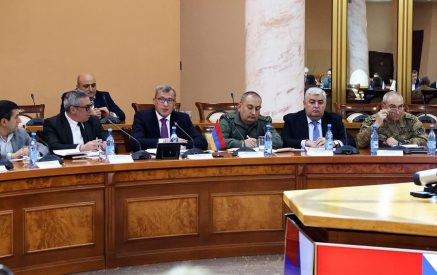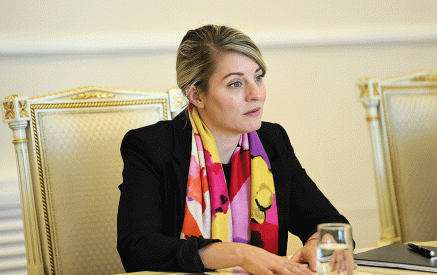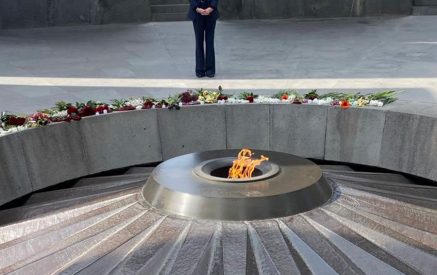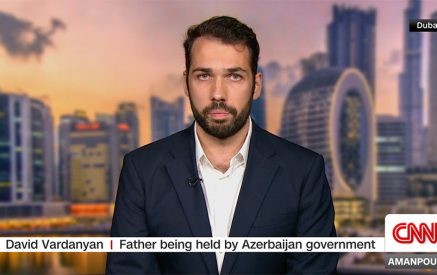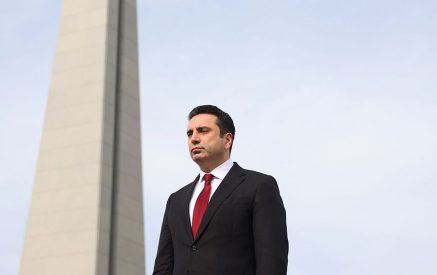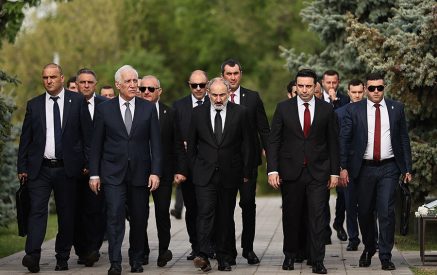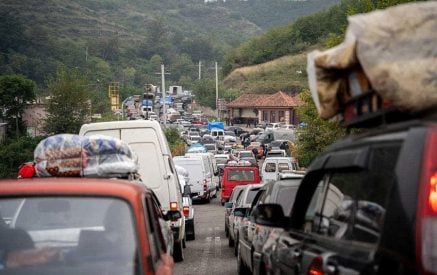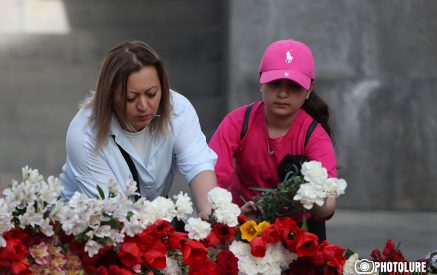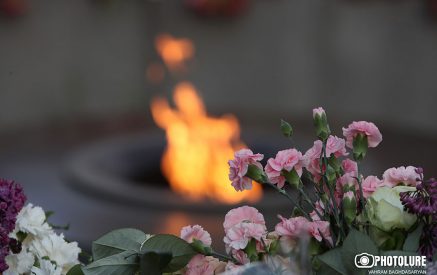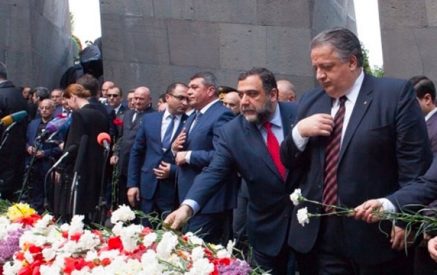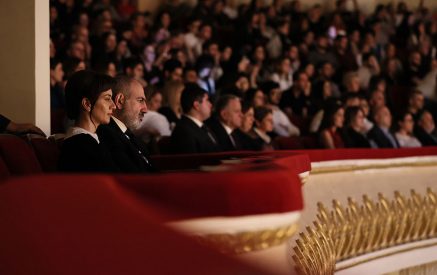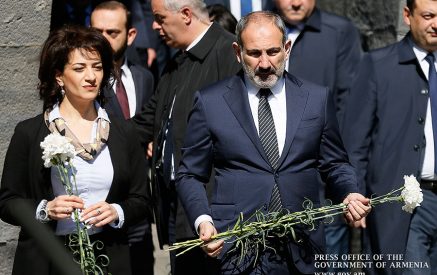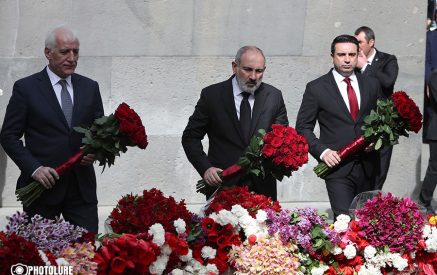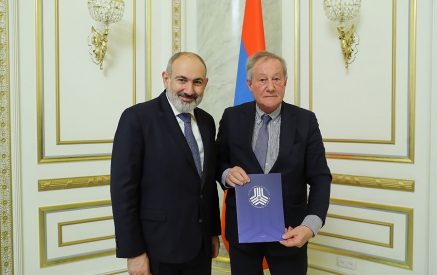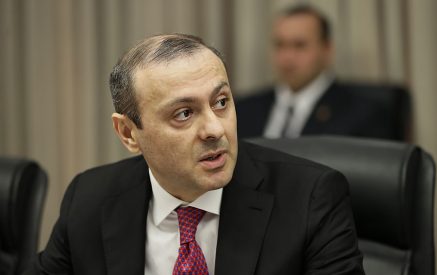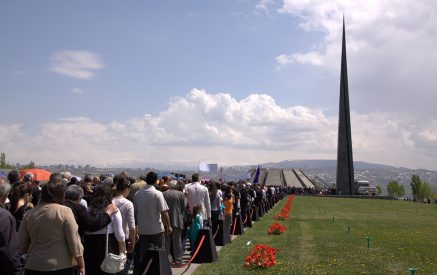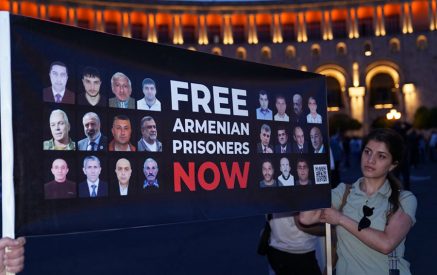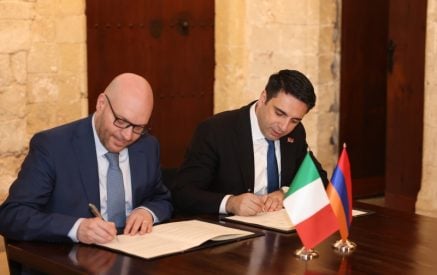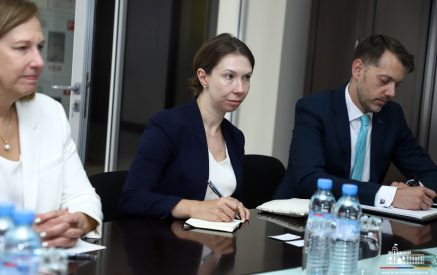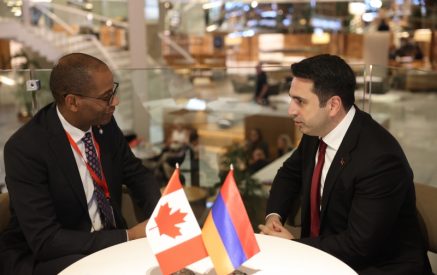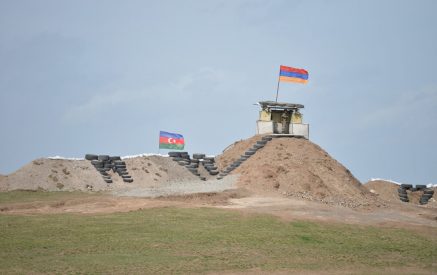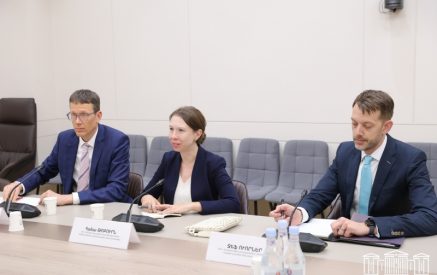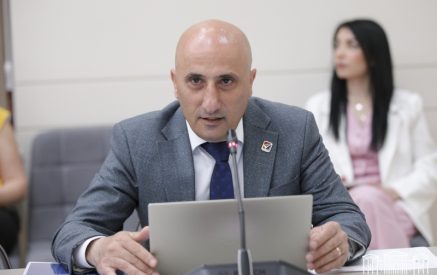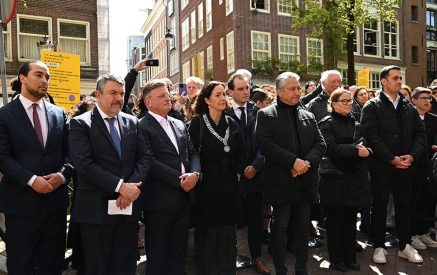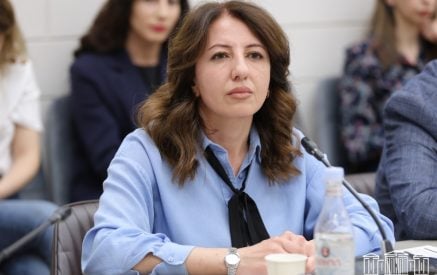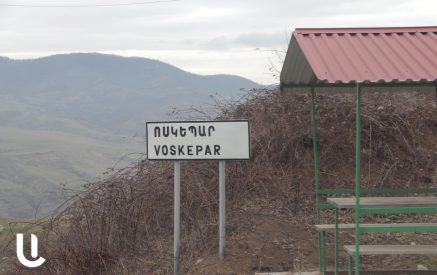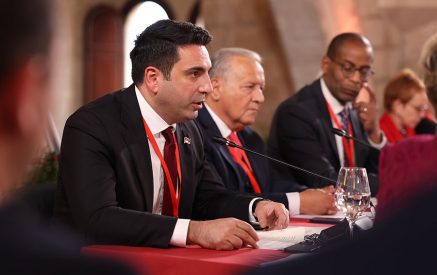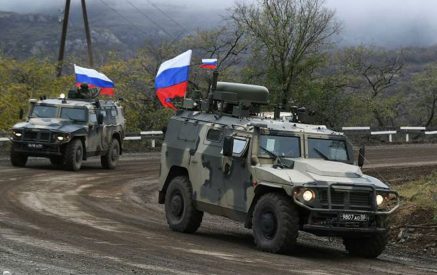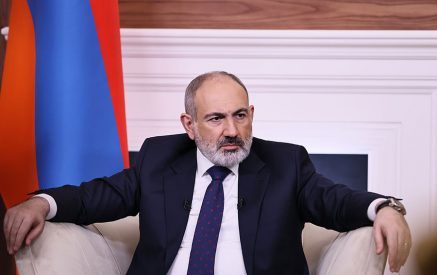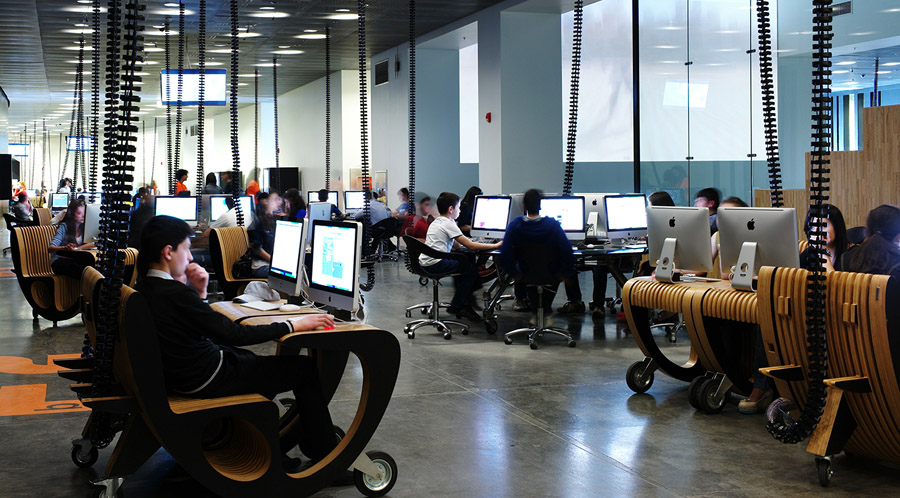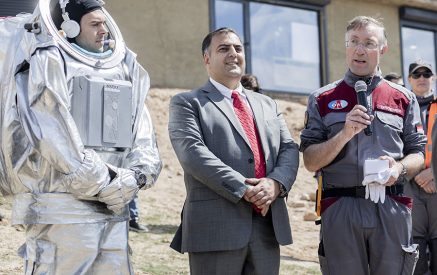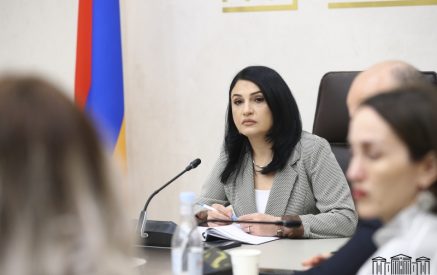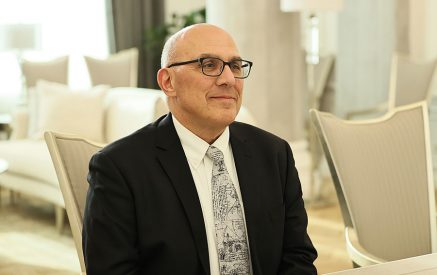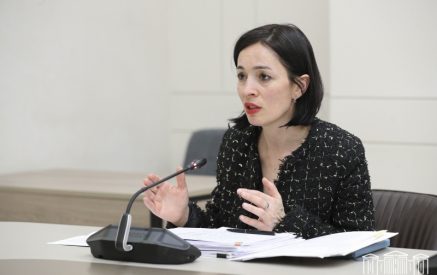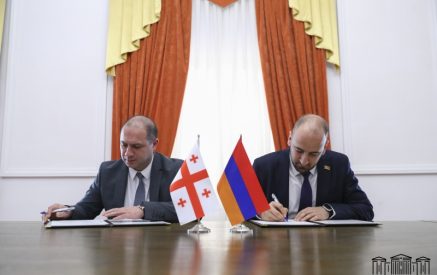By Amy Lieberman
Devex
KARINJ, Armenia — The journey from Yerevan to the northern province of Lori normally takes four hours, but with the one main road undergoing repairs in the summertime, the car trip through Armenia’s wild green mountains can now stretch on all day.
A few visitors finally reach the the public school in Karinj, a village of about 700 people in this rural, sparsely populated region bordering on Georgia. The stately, Soviet-style building still holds many of the era’s relics — musty gymnasium equipment, wooden desks and chairs, and even the same strict teaching method once modeled decades ago.
In one tucked-away, bright classroom on a recent Saturday afternoon, a group of 13 students chatted freely in a semi-circle and giggled at the presence of guests. Their teacher encouraged them to stand up and share family traditions, and to also show how they constructed their completed LEGO mindstorms robots — customizable, moveable creations they program by applying lessons of physics, math and engineering.
In a poor, rural school in Armenia, this mix of science and free-flowing creativity in a classroom is still rare — but it might increasingly be what is necessary to help the country face some of its most challenging socioeconomic problems.
Leading Armenian health and education NGOs are driving forward a progressive educational technology strategy to rethink development in this lower middle-income, south Caucasus country: Infuse creative, technology-centered education into the classroom to provide youth with adaptable work and life skillsets, and boost their chances of finding jobs in their hometowns, or within Armenia.
“When you go to these villages you see that these kids are kind of hopeless, in a way. They are disappointed and their main angle is to come to Yerevan, or think about leaving to work in Russia, as their fathers have done, and this is a real problem,” said Ester Hakobyan, a programs director for the Children of Armenia Fund, or COAF. She led the session in the “SMART” classroom on storytelling, designed to teach kids the art of collecting family historical stories and sharing tales, skills they could use if they go into the local tourism industry.
“What we try to do is create some kind of future in the villages for these kids,” she explained.
While migration from Armenia has slowed since the 1990s, weak economic conditions have contributed to more than 250,000 people leaving the landlocked country of just 3 million since 2008. About 30 percent of Armenians live below the national poverty line and in Lori — the province with the highest rate of migration — it is common to find households temporarily absent of men, who have gone to work in Russia.
Yet despite the lack of available jobs within Armenia, which faces an unemployment rate of about 16 percent, the country has seen a recent growth in its IT sector. And Armenian health and education NGOs such as COAF and the learning initiative the Tumo Center for Creative Technologies, are finding they can bring low-income, rural students into the wave of Armenia’s rising tech scene.
The work also has the potential to replicate in other countries facing similar problems of high rates of youth unemployment and migration, and so Armenia’s experiences could have much to teach the rest of the world, according to COAF and Tumo Center.
“The biggest disease this country has is a lack of belief in the future,” explained Tim Straight, the honorary consul of Norway and Finland and the founder of a fair trade handicrafts organization, Homeland Development Initiative. “In the IT sector, these kids are smart, really smart. They are going to do really well in this country, but there is the reality that they could earn five times more elsewhere. And it becomes a choice of, ‘My language, my kitchen, my culture,’ or is it the money that matters?”
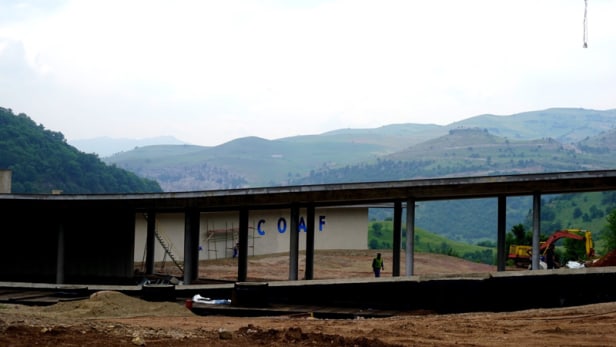
COAF and the Tumo Center, both founded by members of the Armenian diaspora — Turkish-born, New York-based businessman Garo Armen and Lebanese born, Dallas-based telecommunications businessman Sam Simonian, respectively — are both quickly scaling up ed tech initiatives throughout the country.
The six-year-old Tumo Center has a flagship, soaring building in Yerevan — originally constructed for $20 million — where it hosts up to 7,000 students aged 12-18 at any time for free, tailored four-week long after-school programs. Students develop their own personal learning plans through a software system that encourages them to take different courses in animation, game development, web development, digital media and other creative fields based on their preferences and performance. Teachers are Armenian experts, and also international field experts who travel for the short courses.
“It [the work of the Tumo Center] is complimentary. We are not substituting, saying we replace the Armenian schools,” explained Marie Lou Papazian, the managing director of Tumo Center, a Lebanese-born Armenian who moved from New York to oversee the center.
“The school has a specific mission. They teach language, math, geometry and we don’t teach those materials. But through tech, through the Internet, you have access to so many possibilities. You can create so many interesting things and when you engage the kids, you see results fast.”
She spoke from her office inside the Tumo Center, a hub of constant activity, late one recent afternoon. Students streamed throughout the glass building to play games and work on mobile computer workstations — individual computer desktop and chair sets, whose power and ethernet cable are connected to the ceiling, allowing the user to move seamlessly across a room. Down the hall, auditions for an advanced music class were underway.
International interest in the Tumo Center’s unique, individualized model, and unanticipated student engagement, has come in tandem, as the center has expanded to other small cities in Armenia, with support of the Central Bank of Armenian and some private sector groups. The public-private partnership model is also at play in Yerevan, where it rents out space to tech companies, including the image software application PicsArt.
Moving beyond Yerevan, Armenia’s largest, capital city, to address “brain drain” across the country is a shared goal of COAF, a partner organization that has opened up six “SMART” ed tech rooms, including the one in Karinj, over the last two years. Students, and also adults in the community, can access these rooms to research — not just play games, as they sometimes do at home — on computers to learn about the environment, health and to also build robots. Some instruction is in English.
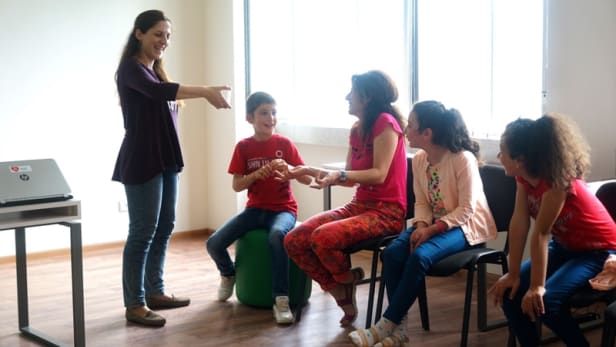
“We understood that traditional, every-day approaches were not possible, so we decided to start a SMART initiative to bring best available practices here. We see potential in Lori,” said Hakobyan, a teacher originally from the region. “We needed a creative working space for kids, who are not used to going to a classroom and being comfortable there, but having very strict rules of behaving. You never see a kind of open work space in a classroom unless you go to very fancy schools. Here furniture is movable. There are walls you can write on.”
COAF, which traditionally centers is work in education, health care and infrastructure, will open a SMART Center in early 2018 in Lori — a building now underway whose vision could match the grandeur and scale of the Tumo Center. The glass, one-level structure will flow with the mountains, explained the architect, Paul Kaloustian, of Beirut, giving visiting students an immersive feeling when they come to take free courses in technology, business and civil engagement, arts and music and environmental practices.
One challenge is to draw in adults from surrounding communities. They might struggle to either physically reach the center, or feel like they have nothing to gain from it. There is a sharp divide between Armenia’s younger and older generations, explained Straight, who spoke of Armenia’s “lost generation” of older women in particular, who learned few skills — beyond sewing, cooking and farming during the Soviet times — that they are now able to translate into work.
Shahane Halajyan, COAF’s SMART Initiative manager, says that Armenia has no option but to ensure that communities can be engaged with ed tech.
“We know that for each individual resident, the condition of the schools is very important and we try to enhance community involvement. But to try to enhance community involvement is not easy to do,” she said. “What we struggle with is, when you are in schools, things go easier. When you move into the community you have to go into effective implementation. With SMART, we have no option but to be successful. We have to make sure it works, because of the investment. There is great potential here we need to access.”


